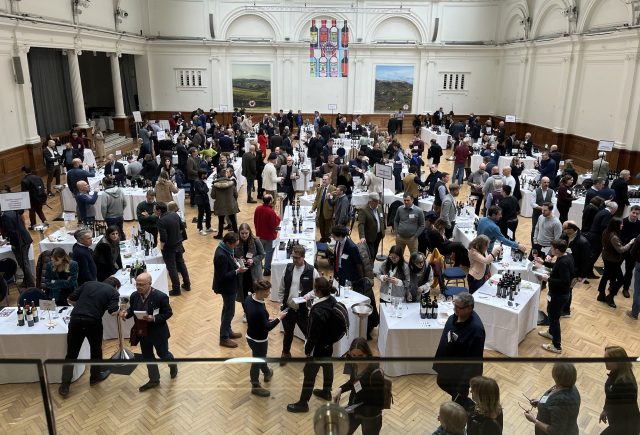What makes Sangiovese special?
At a packed London tasting of Sangiovese-based wines earlier this week, producers from across the breadth of Italy celebrated the versatility and expressiveness of the country’s most planted variety.

With 101 producers gathered into Lindley Hall, this year’s Sangiovese Reset, the second ever edition (and first since the pandemic), certainly had no shortage of expressions of the variety from across central Italy.
The first reference to Sangiovese, or ‘Sangiogheto’, comes from Giovan Vettorio Soderini’s 1600 treatise on Tuscan viticulture.
As Walter Speller, one of the organisers of the event, put it, things endure for a reason: “You can have mediocre wines in Italy, but if a grape variety has been cultivated for hundreds of years, it cannot be a mediocre grape variety…it’s a very sensitive terroir transmitter.”
Indeed, 65,000 hectares of Italy are under Sangiovese vines today – 10% of its total vineyard surface. The variety, both on its own and in blends, is present in 88 Indicazioni Geografiche Tipiche (IGTs).
One of the most celebrated of Italian wine regions, Brunello di Montalcino, is venerated for its highly-structured expressions made from 100% of this grape variety.
Rachele Tiezzi, the youngest of the three generations currently working at the family’s winery, said that though widely-cultivated, Sangiovese is far from easy: “It’s a wine you make in the vineyard. Sangiovese is difficult – you have to be careful and neutral not to obscure it.”
“You need to sit down with it for an hour and see how it develops”. To accompany, Tiezzi suggested hearty regional dishes, such as wild boar and bistecca alla fiorentina.
Partner Content
From Chianti Classico, where 20% of other varieties (such as Canaiolo) are permitted in a blend with Sangiovese, there has been a trend in recent decades to favour aromas of sour cherry from the fruit, and restrained use of new oak in the winery. Fontodi winemaker Giovanni Manetti echoed Speller’s sentiment of Sangiovese’s expressiveness of terroir: “There are many great aspects to the variety – one of the most important is its capacity to express the territory, transferring all the aspects like photo paper. It’s delicate and changeable – it feels where you grow.”
But, while Tuscany remains this grape’s stronghold, other regions, often overlooked on the UK market, are making the most of its quality of versatility to create distinct styles that are expressive of unique terroirs. Approximately a tenth, or 6,500ha, of the total area of Italy devoted to Sangiovese is in Romagna, in the east. Indeed, the variety’s name is likely actually Romagnan in origin, coming from ‘Sanguis Jove’, a reference to the Monte Giove hill, where monk’s from the nearby Santarcangelo di Romagna monastery had vineyards.
The region is striated with clay to the north (which results in more fruit-driven wines with firmer tannins), chalk south of that, and then sandstone south of that (where more fragrant, less tannic wines are produced). As a vertical tasting of Romagnan Sangiovese from 1985 to 2019 demonstrated, the quality examples have the capacity to age for 40 years or more while still retaining freshness.
There was even a rare rosé expression of the variety, from producer Umberto Cesari, available to taste. Patrizia Morini said that the decision to create it was because it “was something missing from our portfolio”.
But, though expressive, Marco Rossi of Umbria’s Lungarotti echoed the sentiments of other producers when it came to the need to be careful with Sangiovese: “It’s like a white mustang – it’s hard to tell what to do, it does what it wants and you have to try to tame it.”
In Lungarotti’s case, Rossi argued that the winery has gone for something different to its Tuscan neighbours to the north: “Instead of going for a Bordeaux style, like Tuscany, we went for a Burgundy style: the tannins are more delicate, the mid-palate is fuller, the freshness is exposed with age…and these wines can age forever.”
Though Italy has an abundance of indigenous varieties, perhaps Sangiovese makes the best case for being the country’s most emblematic, straddling the Apennines and unifying distinct viticultural traditions on both the Adriatic and Tyrrhenian sides. As Rossi put it: “Grape varieties don’t know political borders”.
Related reading: Top picks from the Chianti Classico Collection 2023
Related news
Campari sells Averna and Zedda Piras, raising £88m




